Disclosure: This article contains affiliate links. We may earn a commission from purchases at no extra cost to you, which helps our travel content.
The plane banks sharply over an impossibly blue lagoon, and for a moment, I'm transported back to my father's geological expeditions along Canada's eastern seaboard. But this isn't Nova Scotia—it's New Caledonia, that curious French territory floating in the South Pacific like an editorial footnote to Australia. While most travelers come for the beaches and barrier reef (the second largest in the world after Australia's Great), I've arrived in Mont-Dore with a different manuscript in mind: to explore the urban fabric and daily rhythms of local life in this often-overlooked municipality just outside Nouméa. Here, French colonial architecture stands alongside traditional Kanak meeting houses, creating a cultural palimpsest where multiple narratives—Indigenous, colonial, contemporary—coexist in fascinating tension. For families seeking an educational adventure beyond the standard tropical holiday, Mont-Dore offers a perfect blend of accessibility and authenticity, a place where children can witness firsthand how different cultural traditions have been both preserved and transformed.
The Two Faces of Mont-Dore
Mont-Dore presents itself as a study in contrasts—like a manuscript with competing storylines that somehow form a coherent whole. The northern industrial zone, with its imposing nickel processing plant, speaks to New Caledonia's economic backbone (the territory holds roughly 25% of the world's nickel reserves). The tall smokestacks rising against the mountainous backdrop create an almost surreal juxtaposition against the tropical setting.
Yet travel south, and Mont-Dore transforms into a residential haven of quiet neighborhoods and coastal communities. The southern peninsula culminates at Plum, where families gather on weekends for picnics beneath swaying coconut palms. Here, the rhythm slows noticeably—a deliberate pause in the narrative.
What makes Mont-Dore fascinating for families is precisely this duality. Children can witness a working industrial landscape in the morning and be snorkeling among tropical fish by afternoon. It offers a rare opportunity to discuss resource extraction, colonial history, and environmental stewardship in a context that's both tangible and memorable.
During my visit, I found myself drawn to Mont-Dore's transitional spaces—the areas where industry gives way to nature, where French influence blends with Melanesian traditions. These liminal zones, much like the spaces between paragraphs in a well-crafted essay, often reveal the most about a place's true character.
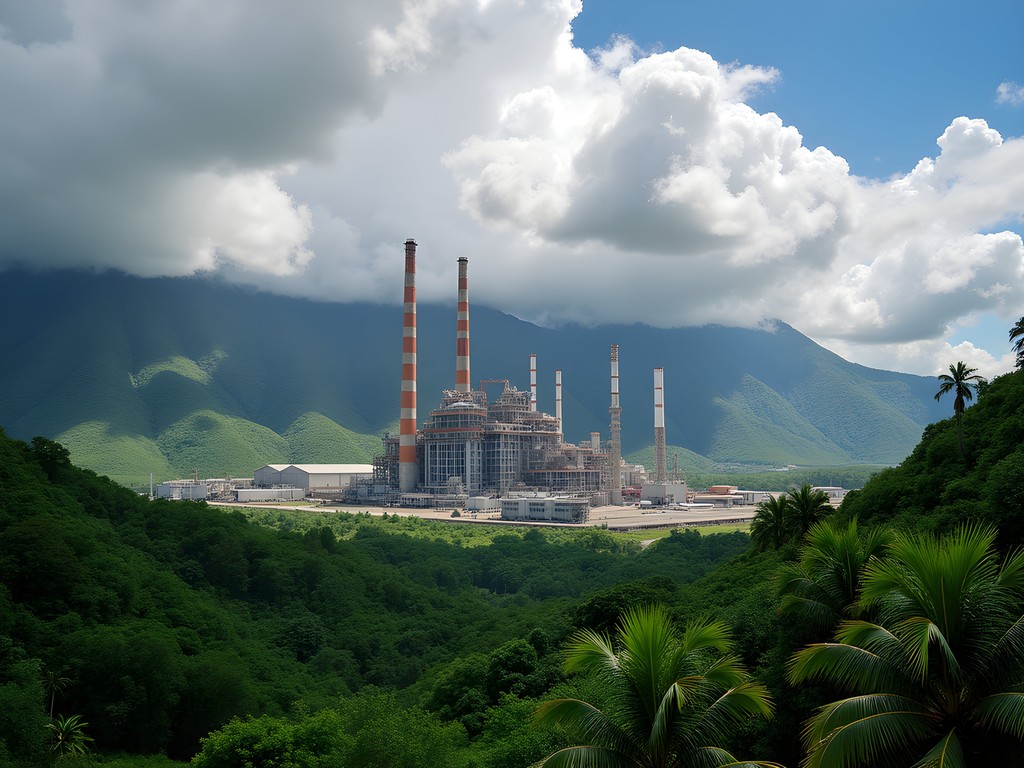
💡 Pro Tips
- Rent a car to fully experience Mont-Dore's contrasting landscapes—public transportation is limited
- Visit the industrial north in the morning when temperatures are cooler
- Pack a French-English dictionary as English is less commonly spoken outside tourist areas
The Markets: A Sensory Narrative
If you want to understand a place's soul, start at its markets. Mont-Dore's weekly markets function as community gathering spaces where the island's multicultural heritage is displayed through food, crafts, and casual conversation. Unlike the more tourist-oriented markets in Nouméa, Mont-Dore's markets primarily serve locals—which makes them all the more fascinating for visitors willing to step beyond the standard tourist narrative.
The Saint-Michel Market, held every Wednesday and Saturday morning, became my regular pilgrimage during my stay. Here, Kanak women arrange vibrant displays of taro, yams, and papayas with the same careful precision my publishing colleagues once applied to book layouts. Nearby, New Caledonians of Vietnamese descent sell banh mi sandwiches that blend French baguette tradition with Southeast Asian flavors—a delicious metaphor for the island's cultural hybridity.
For families, these markets offer an invaluable educational opportunity. My second morning there, I watched as a French father encouraged his young daughter to count out Pacific francs to pay for a bunch of bananas, the vendor patiently helping her with the unfamiliar currency. Children can practice basic French phrases, sample exotic fruits, and engage with locals in a relaxed setting.
I recommend bringing a reusable shopping bag to carry your market treasures. Not only is it environmentally responsible, but it also signals respect for local sustainable practices. The vendors appreciated my colorful Baggu, which sparked several conversations about plastic pollution affecting Pacific islands.
Don't miss the opportunity to try bougna, the traditional Kanak dish where taro, yams, sweet potatoes, bananas, and meat or fish are wrapped in banana leaves and cooked in an earth oven. Several market vendors sell pre-wrapped versions you can heat later—a perfect family dinner that doubles as a cultural lesson.

💡 Pro Tips
- Visit markets early (before 9am) for the best selection and cooler temperatures
- Bring small bills and coins in Pacific francs—vendors rarely accept cards
- Ask before photographing people or their goods—a simple 'Je peux?' with a gesture to your camera is sufficient
Cultural Crossroads: Kanak Traditions Meet French Influence
Mont-Dore offers one of New Caledonia's most accessible windows into traditional Kanak culture, particularly at the Cultural Center in the Boulari district. Unlike more remote tribal areas that require special permission to visit, this center welcomes families and provides context for understanding the indigenous heritage that predates French colonization by thousands of years.
During my visit, I was fortunate to witness a group of elders teaching young people the art of traditional bamboo carving. The careful way they guided young hands reminded me of my first editing mentor, who would patiently mark manuscripts with a red pen while explaining each suggestion. Knowledge transfer across generations follows similar patterns worldwide, regardless of the specific content.
For families with children, the center regularly hosts workshops where visitors can learn basic weaving techniques or try playing traditional percussion instruments. My travel notebook quickly filled with sketches and notes as I attempted to capture the intricate patterns of the woven pandanus mats. Having a dedicated journal for each destination has become something of a ritual for me—these notebooks now fill a shelf in my Toledo home, each one a portal back to past journeys.
The French influence is equally visible throughout Mont-Dore, particularly in its administrative buildings and educational system. Children attend schools that follow the French national curriculum, though recent years have seen increased integration of Kanak language and cultural studies. This educational duality creates a generation of young New Caledonians who move fluidly between European and Pacific worldviews.
One afternoon, I visited the public library in Boulari, where a librarian was conducting a bilingual story hour in French and Nengone (one of the 28 Kanak languages). The children switched effortlessly between languages, a skill that will serve them well in an increasingly interconnected world. For visiting families, the library often has English-language books available and welcomes tourists to their public events.
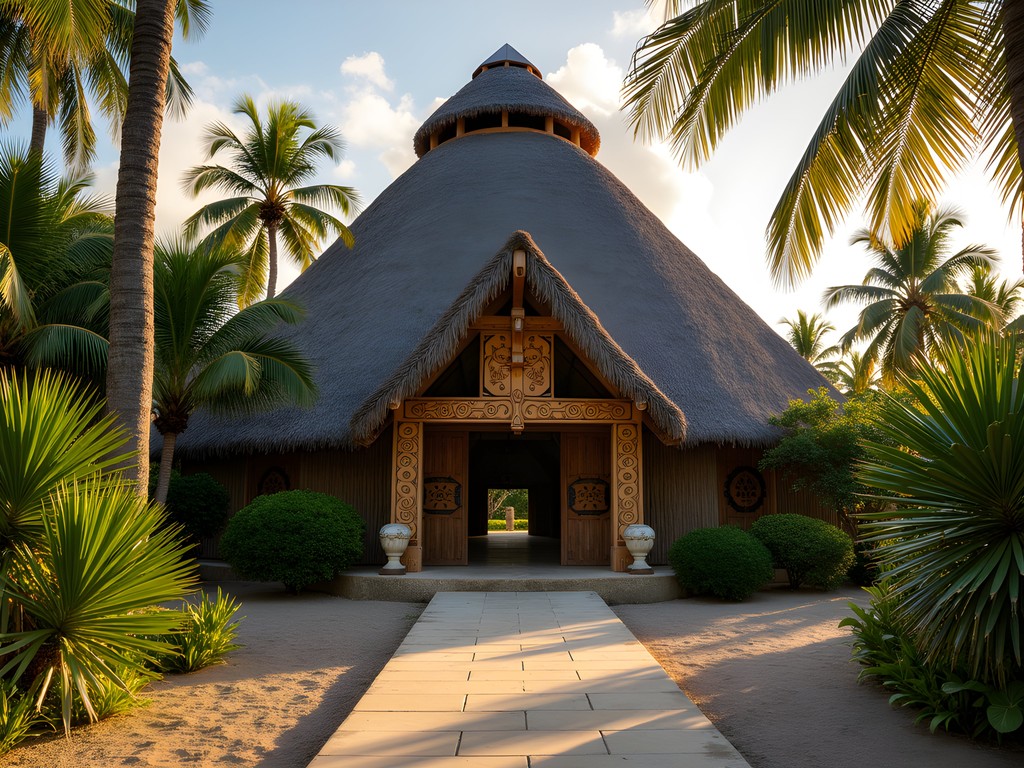
💡 Pro Tips
- Call the Cultural Center ahead of your visit to check if any special events are scheduled
- Respect cultural protocols when visiting traditional sites—remove shoes when entering certain spaces
- Learn a few basic phrases in French before your trip—even simple greetings go a long way
Hidden Urban Gems: Beyond the Guidebook
Mont-Dore rarely features prominently in New Caledonia guidebooks, which tend to focus on Nouméa's cosmopolitan attractions or the untouched beauty of the outer islands. This oversight is actually a gift for travelers seeking authentic experiences away from tourist crowds.
One of my most memorable discoveries was the community pottery workshop near Plum. Here, local artisans create pieces that blend traditional Kanak motifs with contemporary design elements. The workshop welcomes visitors, and for a modest fee, families can try their hand at clay work under the guidance of skilled potters. My attempt at creating a traditional-style pot resulted in something charmingly lopsided, but the process of learning from local artists was invaluable.
For families with active children, the hiking trails around Mont-Dore provide excellent opportunities to burn energy while experiencing breathtaking views. The trail to the actual Mont-Dore peak (the mountain that gives the municipality its name) offers panoramic vistas of the lagoon and surrounding landscape. At 772 meters, it's challenging enough to feel like an accomplishment but manageable for families with children over 10.
I recommend bringing a hiking daypack for these excursions. Mine proved essential for carrying water, snacks, and my camera equipment. The side pockets are perfect for water bottles, and the compact size doesn't throw off your balance on steeper sections of trail.
Another hidden gem is the small maritime museum housed in a former colonial building near the Boulari Bay. Run by passionate volunteers, it chronicles New Caledonia's fascinating maritime history, from traditional Kanak navigation techniques to the arrival of European explorers and the modern fishing industry. The volunteer curator, a retired fisherman named Jean, shared stories of the lagoon's changing ecosystem over his lifetime—a powerful firsthand account of environmental change that resonated with my own interest in endangered landscapes.
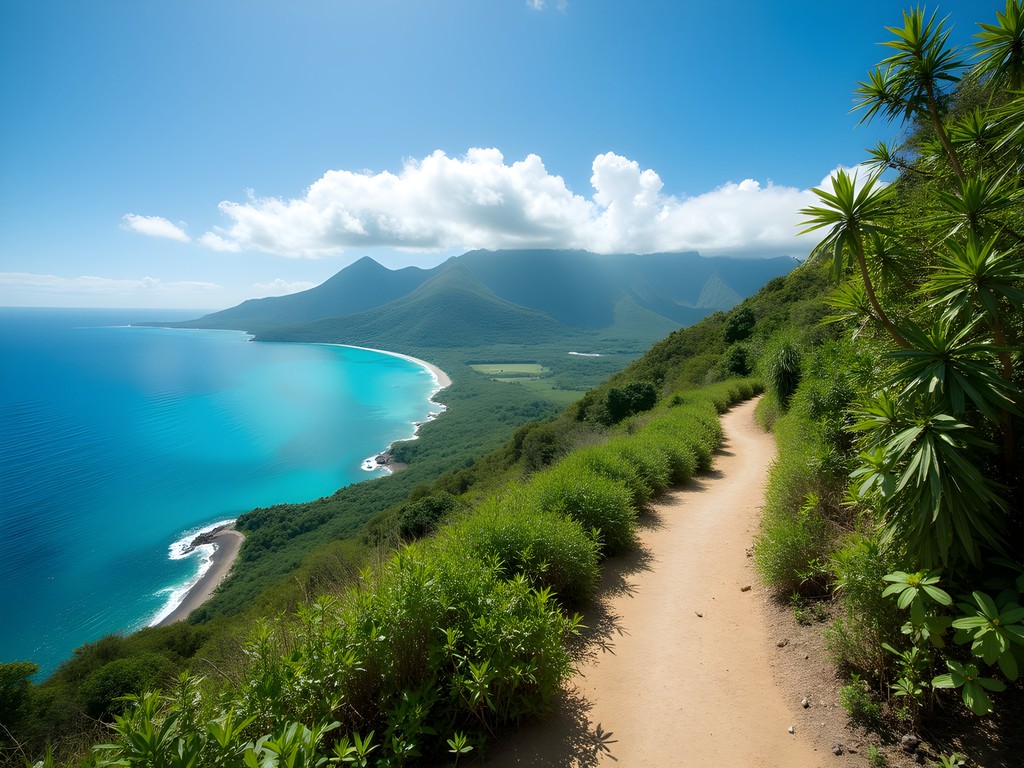
💡 Pro Tips
- Start hikes early in the morning to avoid midday heat
- Ask at your accommodation about current community events—many aren't advertised online
- Visit the maritime museum on Wednesday afternoons when the volunteer guides offer free tours in multiple languages
Family-Friendly Accommodations and Dining
Mont-Dore offers limited but charming accommodation options that provide a more authentic experience than Nouméa's resort hotels. For families, I recommend the self-contained bungalows at Le Jardin des Orchidées in Mont-Dore South. These simple but comfortable units come with kitchenettes, allowing families to prepare some of their own meals—a practical consideration when traveling with children who might not appreciate New Caledonia's French-influenced cuisine at every meal.
The property features a small pool, tropical gardens filled with orchid species, and friendly resident cats that my neighboring family's children adored. The owners, a Franco-Kanak couple, are wealth of information about local attractions and often help arrange activities like fishing trips or cultural demonstrations.
For dining, Mont-Dore offers a range of options that reflect its multicultural heritage. Le Café de la Plage near Plum Beach serves excellent French-Pacific fusion cuisine in a casual setting perfect for families. Their fish of the day, caught by local fishermen and served with indigenous herbs and vegetables, was one of the best meals of my trip. For more budget-friendly options, the snack shops (what New Caledonians call casual eateries) around Boulari serve everything from French pastries to Vietnamese noodle soups.
One evening, I joined a local family at their table at Chez Mamie, a humble roadside establishment where the grandmother-chef prepares whatever she found fresh at the market that morning. No menu, no pretension—just authentic home cooking served family-style. My travel phrasebook came in handy here, as the family was eager to chat but spoke limited English. The simple language guide facilitated a warm cross-cultural exchange that became one of my fondest memories of Mont-Dore.
For picnics and self-catering, the Super U supermarket in Boulari stocks both imported French products and local produce. Their bakery section offers freshly made baguettes throughout the day—an essential component of any New Caledonian meal.

💡 Pro Tips
- Book accommodations well in advance as options are limited in Mont-Dore
- Request a bungalow away from the main road if staying at Le Jardin des Orchidées
- Many restaurants close between lunch and dinner (2pm-7pm)—plan accordingly
Final Thoughts
As my week in Mont-Dore drew to a close, I found myself mentally editing my preconceptions about New Caledonia. Like any good manuscript, the place revealed its depth gradually, through careful attention to detail and context. Beyond the postcard-perfect beaches lies a community navigating the complex currents of colonial legacy, indigenous revival, and modern development. For families willing to venture beyond the standard tourist narrative, Mont-Dore offers an authentic glimpse into the everyday Pacific life that exists between the glossy travel brochure pages. Your children will return home with more than just seashells and souvenirs—they'll carry memories of cross-cultural connections and a nuanced understanding of a place where multiple stories continue to unfold simultaneously. In an increasingly homogenized world, such experiences are the true treasures we can offer the next generation of travelers.
✨ Key Takeaways
- Mont-Dore offers families an authentic alternative to resort-based tourism in New Caledonia
- The dual French and Kanak cultural influences create rich educational opportunities for children
- Local markets, community events, and natural areas provide budget-friendly activities away from tourist crowds
📋 Practical Information
Best Time to Visit
April-November (dry season, with September-October being ideal)
Budget Estimate
$150-250 USD per day for a family of four
Recommended Duration
5-7 days
Difficulty Level
Moderate
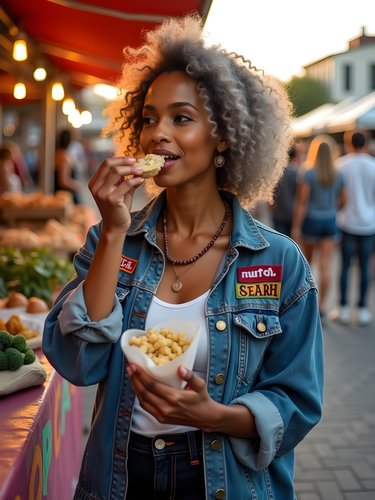
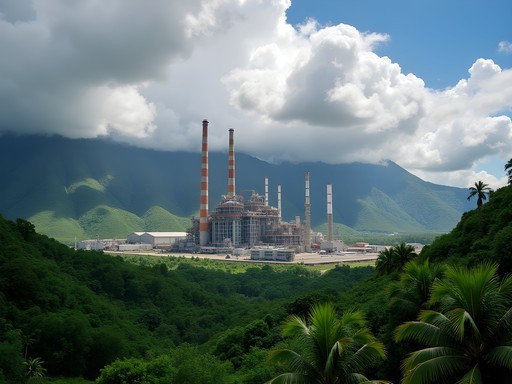
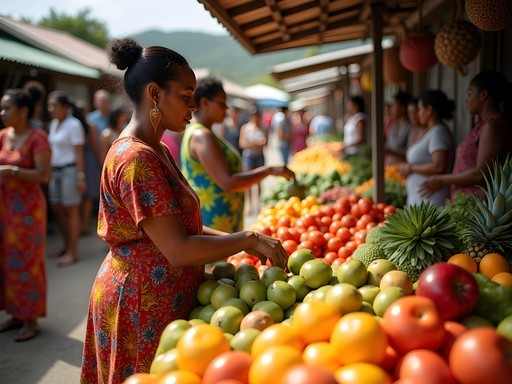
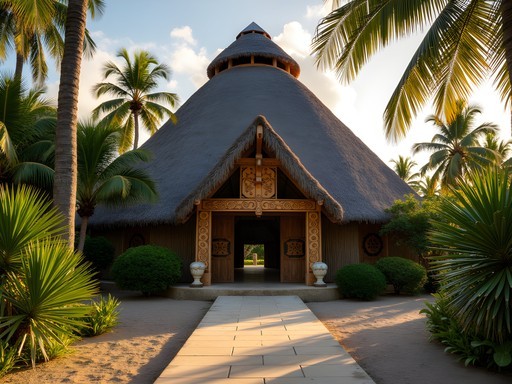












Comments
mountaindiver
I really like your photos of the markets! Going to New Caledonia next month and wondering if Mont-Dore is worth staying in for a few days or better as a day trip from Noumea? Any recommendations for accommodations that aren't super touristy?
sunnybackpacker9691
We stayed at a small guesthouse run by a local family in Plum (southern Mont-Dore). Basic but clean and they made amazing breakfast with local fruits. Much more authentic than the hotels in Noumea!
Leah Clark
Thanks for reading! I'd recommend at least 2-3 days in Mont-Dore if you want to experience both the urban and natural sides. The small B&Bs near Plum Beach offer a nice local experience. Don't miss the Wednesday market - that's when most local vendors show up!
Frank Garcia
Leah's analysis of Mont-Dore as a cultural crossroads is spot-on. When I backpacked through New Caledonia in 2024, I was struck by how the French colonial influence blends with Kanak traditions. The architectural contrasts are fascinating - European-style buildings alongside traditional case structures. For anyone planning to visit, I'd recommend taking the local buses rather than taxis. Not only cheaper, but you'll meet locals and see parts of Mont-Dore tourists usually miss. I found the Bradt New Caledonia Guide particularly useful for understanding the historical context of these cultural intersections.
mountaindiver
We did the public transportation too and it was great! So much cheaper than renting a car. Did you make it to any of the hiking trails Leah mentioned?
Frank Garcia
I did the coastal trail near Plum - absolutely stunning views of the lagoon. The Mont-Dore peak hike was more challenging than I expected though!
sunnybackpacker9691
This post brought back so many memories! I visited Mont-Dore last year and totally agree about the 'two faces' aspect. The contrast between the industrial zone and those incredible beaches is wild. The local market was definitely my highlight too - I still dream about those fresh papayas and that amazing coffee! Did anyone else try the bougna? The traditional Kanak earth oven cooking blew my mind.
Frank Garcia
The bougna was incredible! I had it at a small family place near Plum. Did you venture into any of the tribal areas? I found those experiences much more authentic than the resort areas.
sunnybackpacker9691
Yes! We visited a small village in the north where they showed us traditional weaving. Definitely off the tourist track but so worth it!
photoseeker
Those market descriptions made me feel like I was right there! Adding Mont-Dore to my bucket list!
explorechamp
Great post! Heading to New Caledonia in December. Is Mont-Dore worth staying in for a few days or better as a day trip from Nouméa?
journeydiver
Definitely stay in Mont-Dore! We did 3 nights and it was perfect. Much more relaxed vibe than Nouméa and the guesthouses are more authentic.
Jose McDonald
This post is EVERYTHING! 🙌 Mont-Dore was such an unexpected highlight of my New Caledonia trip last month! I went for the beaches but ended up spending most of my time exploring those hidden urban spots you mentioned. That tiny cafe near the cultural center with the blue shutters? BEST pain au chocolat I've ever had! And the locals were so welcoming when I joined a community volleyball game at sunset. Totally agree about the public transportation - it's not fancy but it's the perfect way to see real local life. Did anyone else try that spicy coconut fish dish at the Saturday market? Still dreaming about it!
journeyguy
How difficult was it getting around Mont-Dore without speaking French? Planning a trip there next year and a bit worried about the language barrier.
Jose McDonald
Not OP but I was there 3 months ago! You'll be fine in the more touristy areas with just English, but having a few basic French phrases really helped me in the markets and local spots. I used language app for a month before going and learned enough to get by. Most younger locals speak some English too!
journeyguy
That's super helpful, thanks! Will definitely brush up on some basic phrases before going.
photoseeker
That market photo with all the colorful fruits is absolutely stunning! Makes me want to book a flight immediately. Did you use any special camera settings to capture those vibrant colors?
Bella Harper
Leah, your comparison between Nova Scotia and New Caledonia immediately resonated with me! I visited Mont-Dore last year and was equally struck by that fascinating blend of French and Kanak cultures. The markets were a highlight for me too - I spent hours talking with local artisans about their craft techniques. Did you get a chance to visit the mangrove forests outside town? There's a small community-run tour there that offers the most authentic glimpse into traditional fishing practices. Your piece beautifully captures that sense of discovery beyond the typical tourist experience.
journeydiver
Those mangrove tours are amazing! We did one at sunset and saw locals catching mud crabs using traditional methods. Such a different side of New Caledonia than just the beaches.
Bella Harper
Yes! The sunset timing is perfect. The guide showed us how to spot the tiny eyes of the crabs reflecting in the flashlight beams. Such a memorable experience!
globelover
This is exactly the kind of place I want to visit! I'm tired of the usual tourist spots. How's the language barrier though? My French is basically nonexistent beyond 'bonjour' and 'merci'.
dreambackpacker
Following! Also curious about this!
Sophia Gomez
In tourist areas, you'll find English speakers, but in Mont-Dore's local spots, a translation app helps a lot. The locals really appreciate any attempt at French though!
globelover
Thanks! Downloading Duolingo right now to learn some basics. Can't wait to try those markets Leah described!
Venture X
Premium card with 2X miles, $300 travel credit, Priority Pass